Introduction
Aluminum foil, a seemingly inconspicuous material, is a ubiquitous participant in our daily experiences that often goes unnoticed. However, the versatility and efficiency offered by this simple product of bauxite ore processing are irrefutable. This article ventures into an in-depth exploration of the common applications of aluminum foil, providing an appreciation of this unsung hero in various sectors.
Food Packaging
From lunch boxes to kitchen foil rolls, aluminum foil always find its roles in the food packaging industry.
Flexible Packaging: Aluminum foil is often used to create flexible packaging solutions such as pouches and bags for products like coffee, snacks, pet food, and more. These pouches are often designed with aluminum foil layers to provide barrier protection against light, moisture, and oxygen.
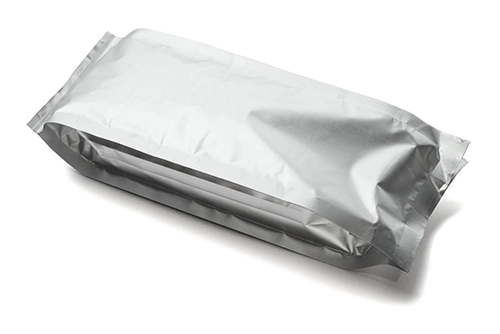
Wrappers and Laminates: Aluminum foil is used to create wrappers and laminates for various food items such as chocolates, candies, and individual food servings. The foil provides a protective barrier and helps maintain the product’s freshness.
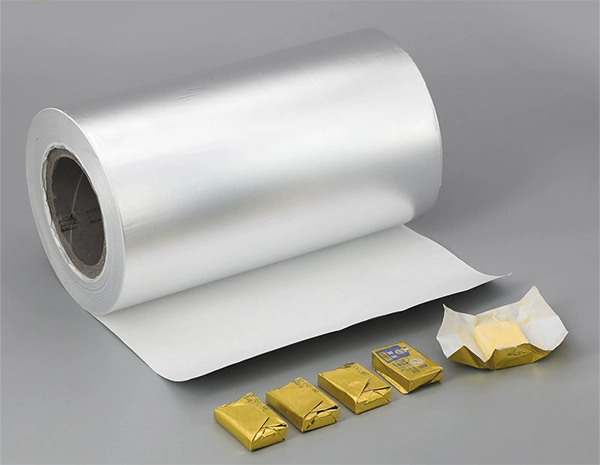
Container Lids: Aluminum foil is commonly used to create lids for aluminum food containers. These containers are widely used for takeout and food delivery services, as well as for storing pre-cooked meals in both commercial and domestic settings.

Baking Trays and Pie Dishes: Aluminum foil is often used to manufacture disposable baking trays and pie dishes. These items are convenient for both commercial and domestic baking applications and are popular due to easy cleanup and the ability to distribute heat evenly.
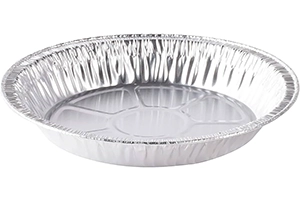
Seals and Caps: In some instances, aluminum foil is used to create seals and caps for bottles and containers, adding an extra layer of protection to ensure product integrity.
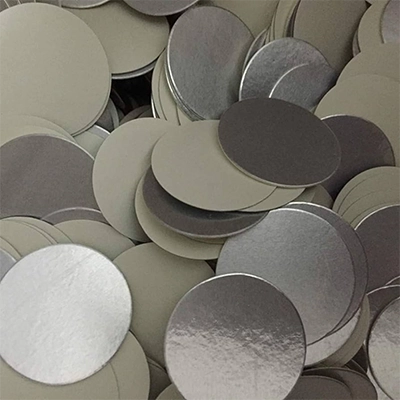
Insulated Packaging: Foil is also used in insulated packaging for items requiring protection from temperature fluctuations, such as ready-to-eat meals, pharmaceuticals, and perishable food items.

These products demonstrate the wide-ranging roles of aluminum foil in the food packaging industry. The material’s unique properties make it an ideal choice for preserving food freshness, ensuring hygiene, and facilitating convenient packaging solutions across various food categories.
Cooking
Grilling Packets: Aluminum foil is often used to create grilling packets, in which food items like vegetables, fish, and meats are wrapped before being grilled. This method helps to retain moisture and flavor while preventing direct contact with the grill.

Oven Liners: Thin aluminum foil sheets are used as oven liners to catch drips and spills, making cleanup easier and protecting the oven from food residue.

Molds and Shaping Tools: Culinary professionals sometimes use aluminum foil to create custom molds and shaping tools for specialty dishes and desserts.
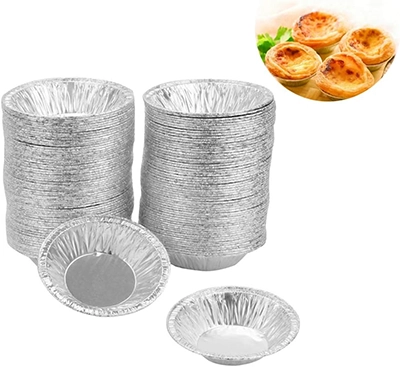
Barbecue Drip Pans: Aluminum foil is used to make drip pans for catching grease and food drippings when barbecuing, helping to prevent flare-ups and maintain a clean cooking environment.

Aluminum foil’s versatility, flexibility, and ability to withstand high and low temperatures make it an indispensable material in the culinary industry. From food preparation to cooking, grilling, and storage, aluminum foil serves a multitude of purposes and contributes to efficient and practical culinary practices.
Insulation
Radiant Barriers: Aluminum foil is often used as a key component in radiant barriers, which are materials designed to control heat transfer in buildings. It is typically used to reflect radiant heat, helping to keep living spaces cooler in warm climates and retain warmth in colder environments.
Insulation Facing: Aluminum foil is commonly laminated to insulation materials such as fiberglass, foam board, and mineral wool to create insulation facing. This facing provides a vapor barrier and radiant barrier to protect against heat transfer and moisture transmission.
Duct Wrap: Aluminum foil is used in the manufacture of duct wrap insulation, which is designed to insulate HVAC ductwork. The foil acts as a vapor barrier and contributes to the overall insulation performance of the system.
Insulation Boards and Panels: Aluminum foil is integrated into insulation boards and panels, serving as an outer protective layer that enhances the material’s thermal performance and durability. These panels are used in applications such as roofing, walls, and ceilings.
Insulation Tapes and Sealants: Aluminum foil is used to create tapes and sealants that are employed in insulating and sealing joints, seams, and gaps in insulation systems, providing an effective barrier against air and moisture infiltration.
Sarking and Roofing Membranes: Aluminum foil is used in sarking and roofing membranes to provide insulation and moisture protection in roofing applications. These membranes are used to improve the thermal efficiency and weather resistance of buildings.
Reflective Insulation: Aluminum foil is utilized to create reflective insulation, which is effective in reducing radiant heat transfer. It is commonly used in roofing, walls, and attics to improve energy efficiency.
These applications demonstrate the critical role of aluminum foil in the insulation industry, where it contributes to managing thermal performance, moisture control, and energy efficiency in various building and construction scenarios.
Electronics
Electromagnetic Shielding: Aluminum foil is used to create shielding materials that protect electronic devices and components from electromagnetic interference (EMI) and radio frequency interference (RFI). These shielding materials can be in the form of tapes, wraps, or laminates.
Flexible Printed Circuit Boards (PCBs): Aluminum foil serves as a key component in flexible PCBs, where it is utilized to create conductive traces. These flexible circuits are used in a wide range of electronic devices, such as smartphones, cameras, and wearable technology.
Cooling Systems: Aluminum foil is integrated into heat sink systems, which are essential for dissipating heat from electronic components such as CPUs, GPUs, and power transistors. Foil is used as a component in heat sinks to improve thermal conductivity and aid in heat dissipation.
Insulation Layers: Aluminum foil is used to create insulating layers that shield electronic components from heat, moisture, and other environmental factors. These layers can be part of flexible packaging for electronic devices or integrated into the design of electronic components to manage thermal insulation.
Battery and Capacitor Wrapping: Aluminum foil is used for wrapping batteries and capacitors to protect them from external contamination, provide electrical insulation, and contribute to heat dissipation.
Packaging for Electronic Components: Aluminum foil is commonly used in the packaging of electronic components such as integrated circuits (ICs) and semiconductors. The foil provides protection against moisture, dust, and static discharge.
Electrolytic Capacitors: Aluminum foil is an essential component in the production of electrolytic capacitors, which are widely used in electronic circuits to store and release electrical energy.
These applications demonstrate the crucial role of aluminum foil in the electronics industry, where it contributes to shielding, heat management, and protection of electronic components and devices.
Pharmaceutical Packaging
Blister Packs: Aluminum foil is widely used to create blister packs, which comprise a thin layer of aluminum sealed over a plastic sheet. These packs are utilized to encase individual doses of pharmaceutical products, such as tablets and capsules, providing protection from light, moisture, and external contaminants.
Strip Packs: Similar to blister packs, strip packs also involve the use of aluminum foil to provide individual unit doses of pharmaceutical products. The foil creates a barrier to moisture and other environmental factors, extending the shelf life of the medications.
Cold Forming Blister Foil: This specialized type of aluminum foil is used in the packaging of pharmaceutical products where the tendency for corrosion and product deterioration due to moisture or light is high. It provides a robust barrier to protect medications and pharmaceutical formulations.
Aluminum Tubes: Aluminum foil is used to create tubes for ointments, creams, and gels in pharmaceutical packaging. These tubes ensure the integrity of the pharmaceutical product and contribute to its extended shelf life.
Lidding Foils: Aluminum foil is used as lidding material for sealing cups, containers, and jars for pharmaceutical products such as ointments, creams, and tablets.
Parenteral Packaging: Aluminum foil is used in the packaging of parenteral drugs, such as ampoules and vials. The foil serves as a barrier to protect the sterility and integrity of these critical pharmaceutical products.
Unit Dose Packaging: In addition to blister and strip packs, aluminum foil is used in other unit dose packaging formats for pharmaceutical products, ensuring safety, hygiene, and individual dosage accuracy.
The pharmaceutical industry relies extensively on aluminum foil for protective and hygienic packaging solutions, especially for products that are sensitive to light, moisture, and air. This reliance is due to the foil’s excellent barrier properties, stability, and conformity to rigorous regulatory standards.
Automobile
Sound Dampening Materials: Aluminum foil is integrated into sound dampening materials used in automotive components to reduce noise, vibration, and harshness (NVH) within the vehicle’s interior.
Heat Shielding Components: Aluminum foil is utilized in the construction of heat shields and thermal barriers that protect various components from radiant heat generated by the engine, exhaust, or other heat sources.
Cable Wrapping: Aluminum foil is used to create protective wrapping for cables and wiring within the automobile, providing electrical insulation and shielding against electromagnetic interference (EMI).
HVAC Ducting: Aluminum foil is used in the manufacturing of ducting systems for HVAC (Heating, Ventilation, and Air Conditioning) components within vehicles, contributing to thermal insulation and airflow management.
Reflective Films: Aluminum foil is used to manufacture reflective films that might be integrated into sun visors, window shades, or other components to help manage interior temperatures and protect against UV radiation.
These applications demonstrate the wide range of roles that aluminum foil plays in the automobile industry, contributing to thermal management, noise reduction, electrical insulation, and protection against environmental factors.

